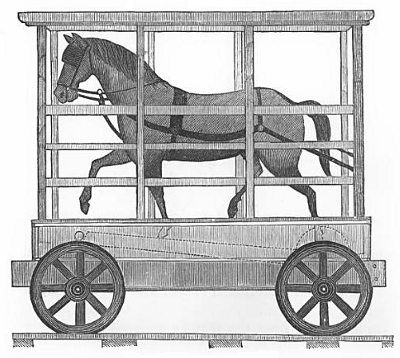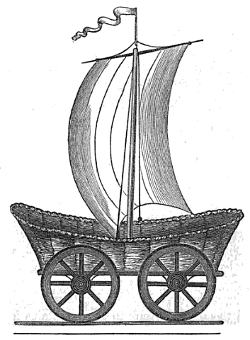
William Henry Brown’s The History of the First Locomotives in America (1871) describes two unlikely competitors that steam had to contend with on the Baltimore and Ohio Railroad. In the first, a horse was placed in the car and made to walk on a belt that drove the wheels. “The machine worked indifferently well; but, on one occasion, when drawing a car filled with editors and other representatives of the press, it ran into a cow, and the passengers, having been tilted out and rolled down an embankment, were naturally enough unanimous in condemning the contrivance.”

The second was a wind-driven car rather optimistically called the Meteor. This would run only when the wind was behind it, and the inventor “was afraid to trust a strong side-wind lest the vehicle might be upset; so it rarely made its appearance except a northwester was blowing, when it would be dragged out to the farther end of the Mount Clair embankment, and come back, literally with flying colors.”
“Like the horse-car, the sailing-car had its day. It was an amusing toy — nothing more — and is referred to now as an illustration of the crudity of the ideas prevailing forty years ago in reference to railroads.”
